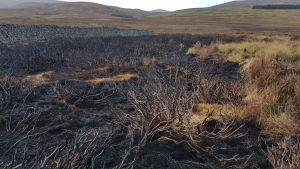The fantastic outcome of a peatland resolution from the IUCN World Conservation Congress in Hawaii reminds us of the global imperative to protect and enhance our peatlands. Decades of peatland restoration work in the UK has gained international recognition and we are seen to be leading the way for other peatland nations. Whilst pausing for a pat on the back we must also focus on putting in place a lasting framework to protect, enhance and sustainably manage our peatlands so that we can continue to provide an example.
The Brexit decision has created great uncertainty, but also provides opportunities. Now more than ever we have to set out clearly what we want for our peatlands and how it can be delivered in these rapidly changing times. We have submitted evidence to the House of Commons Environmental Audit Committee ‘Inquiry into the future of the natural environment after the EU referendum’ pointing out that much of the EU legislation giving protection for peatlands comes from international obligations that continue to apply to the UK. Forging a suitable alternative to the EU funding for rural development (including the Common Agriculture Policy), nature conservation, water management, climate change and research that has delivered many £100’s of millions to support peatlands presents a big challenge. We have reminded the inquiry that if society is to protect peatland natural capital and avoid huge future costs from degraded peatlands then resources have to be found. To address this we’ve suggested a national fund for peatlands to enable regional projects and individual land managers to restore peatlands. In the discussions around the support mechanisms for farmers we have highlighted that it is in all our interests to deliver healthy peatlands and that public funding is required to address the market failure to fully reflect the public benefits peatlands provide. In addition, progress is being made on building private funding opportunities alongside public funds using initiatives such as the Peatland Code. Building awareness, trust and confidence among the business sector and ensuring we have good projects able to deliver peatland restoration is vital. So too is having the right scientific evidence and monitoring data to allow us to quantify the benefits for carbon, water and biodiversity. We have made an approach to NERC recommending that strategic funds be made available for peatland research that will allow us to deliver a major environmental outcome.
The UK Government has agreed on establishing a UK Peatland Strategy and a framework to deliver it, working with the IUCN UK Peatland Programme. An outline of the strategy will be presented at our annual conference to be held in Shrewsbury later this year and we hope those attending will use the time to ensure the peatland community has a strong voice in the important discussions taking place to plan the UK’s future and maintain our environmental reputation at global level.
Clifton Bain, Director
IUCN UK Peatland Programme










